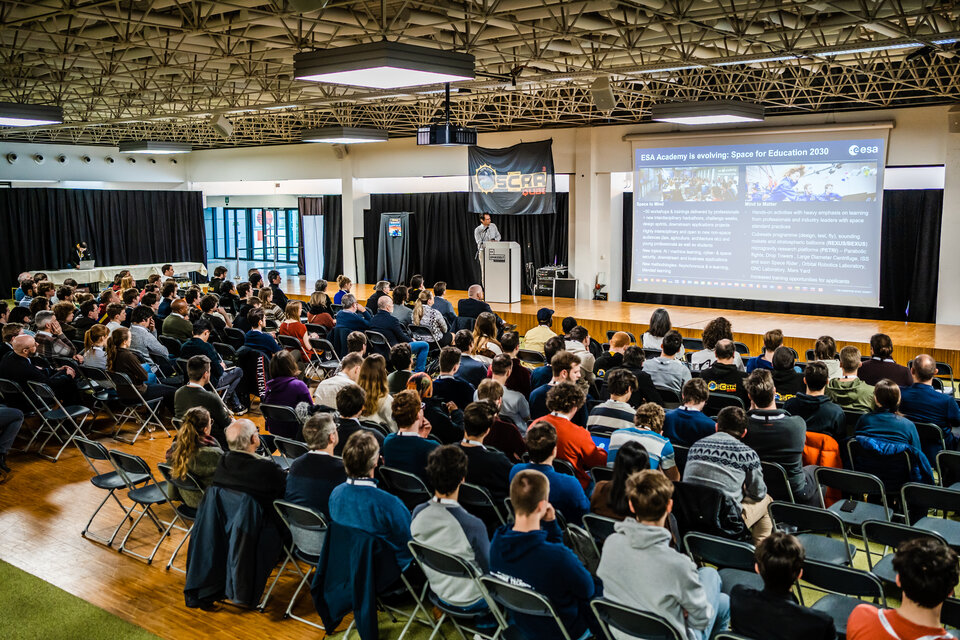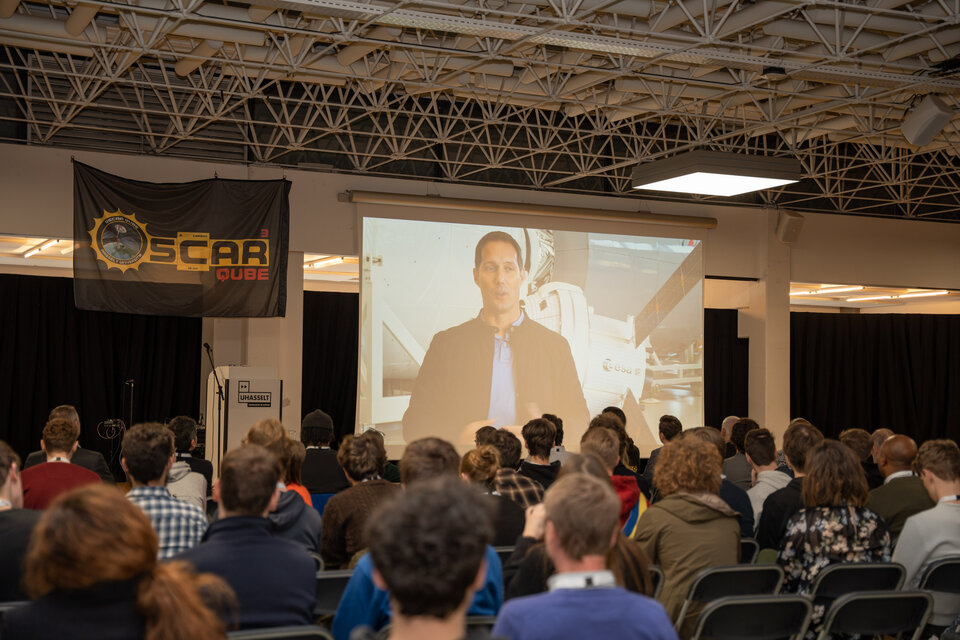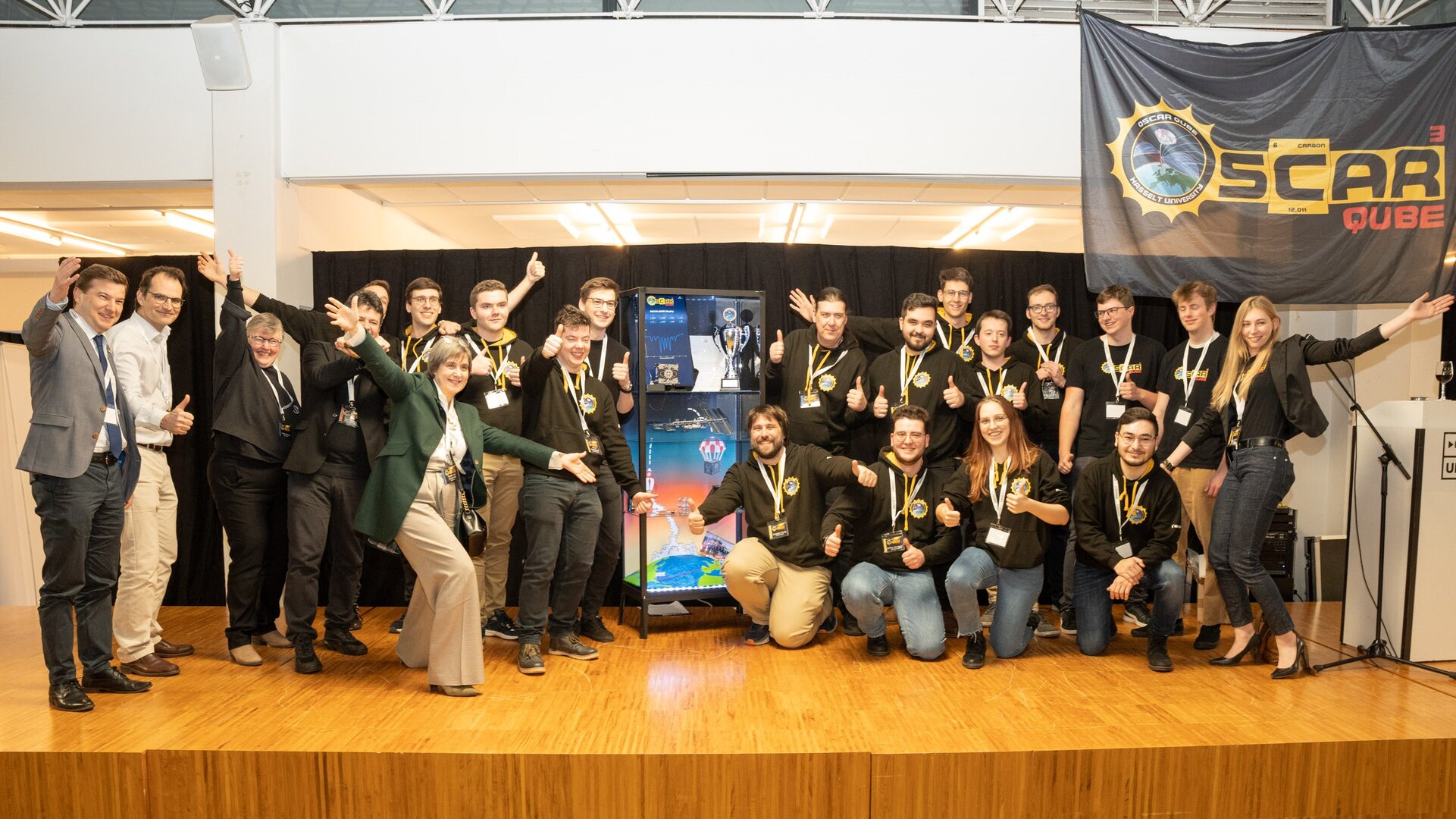OSCAR-QUBE: Space to Ground, but not the end of the journey
Students from the University of Hasselt in Belgium who participated in Orbit Your Thesis! as the OSCAR-QUBE team were delighted to have their experiment returned to them after spending close to a year on the ISS. The experiment will be on display at the university for years to come so that all future students can draw inspiration from the team’s accomplishments with one underlying message – with hard work and perseverance, anything is possible.

Last week at University of Hasselt in Belgium, 200 university students came to witness an important part of the OSCAR-QUBE project; the return of the experiment to the university grounds!
OSCAR-QUBE was a project selected in 2020 to take part in the former Orbit Your Thesis! programme of ESA Academy, now known as PETRI. The objective of the experiment was to map the magnetic field in Low Earth Orbit (LEO) from deep within the International Space Station using technology based on quantum physics. The project took just over a year to go from paper analyses and reviews, to tested and space-qualified flight hardware. This incredibly fast pace from concept to hardware could only be achieved by dedicated and driven students from varying education backgrounds. Multi-disciplinarity and expertise in diverse fields is critical for successful space projects. The OSCAR-QUBE team found the perfect balance of disciplines to make this project a resounding success.
Once installed on the ISS by ESA astronaut Thomas Pesquet, the experiment immediately began generating data that accurately mapped the magnetic field in Low Earth Orbit, demonstrating for the first time that this particular type of quantum technology, using nitrogen vacancies in carbon lattices, can perform reliably in space whilst embedded deep inside a spacecraft.
Three missions in one

Besides the educational value of being part of an ESA Academy programme, the experiment also provided good scientific and technical data soon to be published. The OSCAR-QUBE project had a less apparent objective, but just as important as science and education. The third objective was to inspire future generations of students.
The OSCAR-QUBE return event was targeted to a large audience of younger students who came to listen to inspirational speakers such as Prof Dr Bernard Vanheusden, Rector and Vice Chancellor of University of Hasselt, Torben Henriksen, Director of ESA’s Technology, Engineering and Quality directorate and Thomas Pesquet, ESA astronaut. The audience also heard from industrial and political figures as well as representatives of the European Space Agency to be told how they too could be involved in projects such as OSCAR-QUBE as part of their academic career.
During the project’s lifetime, the OSCAR-QUBE team worked hard to nurture close ties and support from local industry and politicians. During the event, the 200-strong audience was then motivated to find out many new and exciting opportunities in the space field that await them as young professionals during a networking session.
Inspiration for all
The space-flown hardware was turned one last time by Hugo Marée, Head of ESA Education Office in a ceremony which saw the final resting place of the experiment, a beautiful glass display case in the aula of the university’s main building to be seen by thousands of students as they walk past the student-built experiment that orbited the Earth over 5000 times. It’s presence will surely inspire the next generation of students to also believe that if the right people work together toward the same goal, anything is achievable.
The story continues…

The OSCAR-QUBE story doesn’t end there however, the students have since been busy developing a smaller version of the ISS-flown hardware to be part of the Ariane 6 maiden flight towards the end of 2023 as part of the YPSat payload. Environmental testing is currently being performed and the students will soon be ready to fly their miniaturized payload on Europe’s gargantuan rocket.


